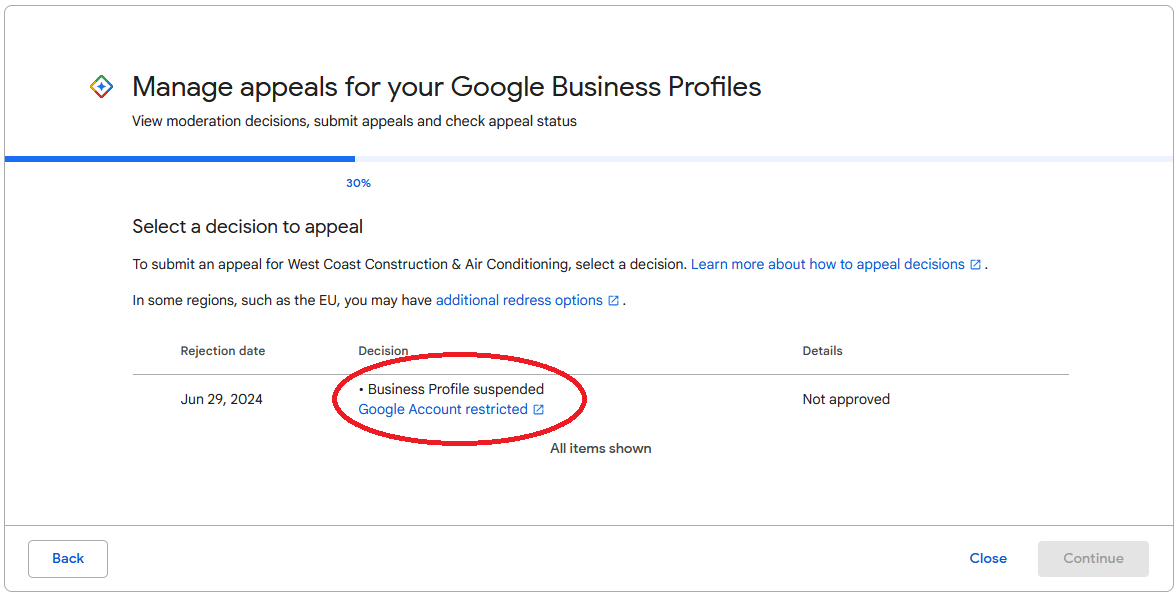Remember the old “I will sell you one of the top 3 positions in Google” con? It lingered, for years, in one form or another but now it’s evil cousin is back. The new version of this old scam is now about removal of your listing, rather than placing it at the top. What’s terrible about this is that it leverages the much more powerful fear-of-loss frame work rather than the weaker want-of-gain. And that’s why people are falling for it.
One of our clients, a tax resolution specialist, recently became the target of this scam. They were threatening him with removal of his Google Business Profile (GBP) from Google Maps unless he paid them.
How the Scam Works
Here’s how these scammers operate:
- They contact business owners, often through phone calls or emails, with urgent and threatening messages.
- They claim they have control over your Google Business Profile and that they’ll delete it or make it invisible unless you pay them a fee.
- Some even offer “services” to boost your GBP ranking for a price—an offer that sounds enticing, but is pure fiction.
The goal? To scare you into forking over your hard-earned cash.
Why This Has An Air Of Truth
Most people know that it’s Google who controls the presence (or lack thereof) of the GBPs in both Google Maps and their search results. Many people also realize that it’s possible to community-edit content on there. In fact, there’s still quite a bit of bad behavior related to this, especially between competitors. The ability to affect a change to someone else’s listing is exactly why this scam sounds like it could be believable.
How to Protect Yourself
Stay ahead of the scammers by following these tips:
- Verify Claims: If someone contacts you about your Google Business Profile, do not take their word for it. Log into your GBP account to check its status.
- Trust Only Known Companies: You should either reach out to Google directly, or to your trusted marketing partner (if you have one). Don’t even trust someone claiming to be Google if THEY initiated the call to you. That is another common scam tactic.
- Stay Calm: Scammers thrive on urgency. Take a breath and evaluate the situation before responding to any threats or demands.
The Bottom Line
Scammers are always finding new ways to exploit small business owners, but with a little knowledge and vigilance, you can stay one step ahead. Remember: if it sounds too good to be true, or if someone is pressuring you with threats, it’s likely a scam. When it comes to your Google Business Profile, trust only Google—no one else has the keys to that kingdom.
Stay safe, stay informed, and as always, keep an eye on ScamWatch for updates!



